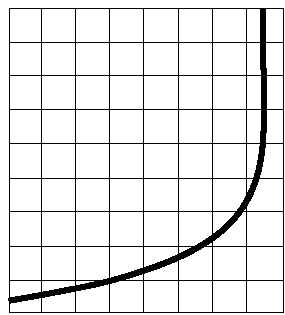the realms of temperature and water vapor. The
processes of radiation, the exchange of sensible heat,
and the evaporation and condensation of water vapor on
the sea surface maintain the heat balance of the oceans.
The amount of radiant energy absorbed by the sea
depends upon the amount of energy reaching the
surface and the amount of reflection by the surface.
When the Sun is directly overhead, the amount of its
energy reflected amounts to only about 3 percent. Even
when the Sun is 30° above the horizon, the amount of
reflection is just 6 percent. However, there is a
reflection of about 25 percent of the energy when the
Sun is 10° above the horizon. (See fig. 6-7.) Reflection
loss is especially great in the presence of waves when
the Sun is low.
Much of the insolation is absorbed in the first meter
of seawater. This is true of the clearest water as well as
of quite turbid (opaque) water. In water that is
extremely turbid, the absorption is in the very
uppermost layers. Foam and air bubbles are two major
causes
of
a
proportionately
greater
amount
of
absorption in the uppermost meter of the sea. However,
due to vertical mixing, the heat absorbed in the upper
layer is carried to great depths of the ocean, which acts
as a great heat storage reservoir.
There is an exchange of energy between the oceans
and the atmosphere. The surface of the oceans emits
long-wave heat radiation. The sea surface at the same
time receives long-wave radiation from the atmosphere.
Although some of this incoming radiation from the
atmosphere is reflected from the surface of the oceans,
most of it is absorbed in a very thin layer of the water
surface.
The
difference
between
the
incoming
long-wave atmospheric radiation and the outgoing
long-wave radiation from the sea surface is known as
the effective back radiation. The effective back
radiation depends primarily on the temperature of the
sea surface and on the water vapor content of the
atmosphere. The time of day and the season have little
effect on effective back radiation, since the diurnal and
annual variation of the sea-surface temperature and of
the relative humidity of the air above the oceans is
slight.
For conduction to take place between the oceans
and the atmosphere there must be a temperature
difference between the ocean surface and the air
immediately
overlying
it.
On
the
average,
the
temperature of the surface of the oceans is higher than
that of the overlaying air. It might be expected that all of
the ocean’s surplus of heat is either radiated or
conducted to the atmosphere. This is not the case. Only
a small percentage of the ocean’s surplus heat is
actually conducted to the atmosphere. About 90 percent
of the surplus are used for evaporation of ocean water.
Due to the processes of radiation and mixing, the
oceans act as a thermostat relative to the atmosphere.
The energy stored at one place during one season may
be given off at another locality and during a later
season. Hence, there seems to be a constant effort by
the
atmosphere
and
the
oceans
to
keep
their
temperatures in balance by an interchange of heat.
STABILITY.—The deciding factor of most
weather phenomena is the stability of the atmosphere.
Air masses may become more stable or less stable as
they move over ocean surfaces. The temperature
contrast between the ocean surface and the lowest
layers of the overlying air determines whether the
ocean will promote stability or instability.
When the air moving over the ocean has a higher
temperature than that of the ocean surface, the lower
layers of the air become stable in time. On the other
hand, when the air mass is colder than the ocean surface
over which it is moving, instability results. As the
colder air is warmed by the ocean, convective activity
eventually develops. If the warming is sufficiently
intense, thunderstorms develop.
MOISTURE CONTENT.—The interchange of
moisture between the atmosphere and the oceans is one
of
the
most
important
features
of
the
whole
meteorological picture. Without this interchange,
6-18
80O
60O
50O
70O
40O
30O
20O
10O
90O
0O40%35%30%
20%
10%
15%
25%
5%
0
PERCENTAGE OF REFLECTION
AG5f 0607
Figure 6-7.—Percentage of reflected radiation.


